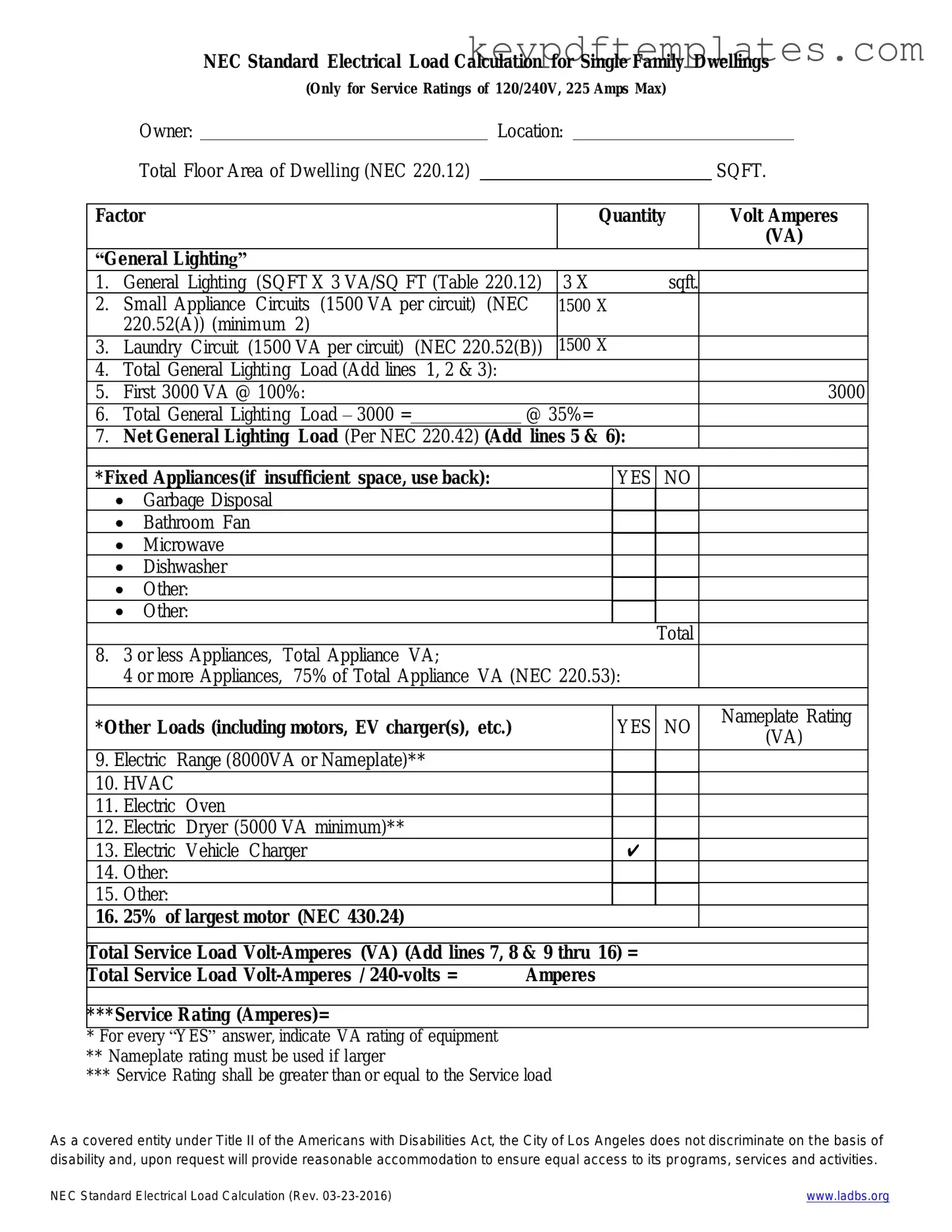Get LADBS NEC Standard Electrical Load Calculation Form
The LADBS NEC Standard Electrical Load Calculation form is a crucial document used by electrical professionals in Los Angeles to determine the expected electrical load of a building or facility. This form ensures compliance with the National Electrical Code (NEC) and helps in the accurate planning of electrical systems. By providing a standardized method for calculating electrical loads, it promotes safety and efficiency in electrical installations.
Modify Document Online
